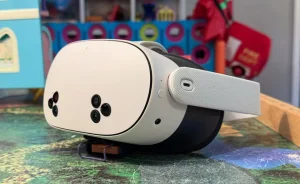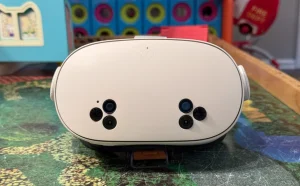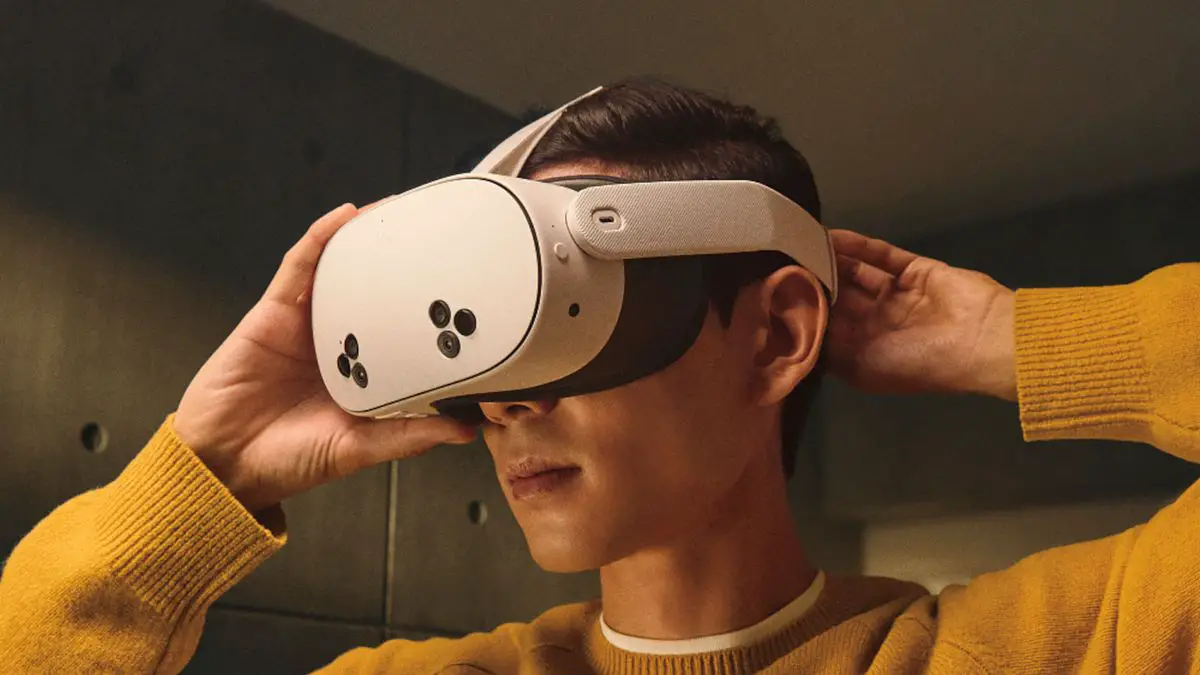Instead of stuffing additional technology into its Quest VR headsets, which would surely raise the price, Meta has chosen the opposite approach with the Quest 3S. It’s a somewhat bigger, slightly less sharp version of the Quest 3, priced at $300, nearly half the headset’s $500 initial price. The Quest 3S proposition is straightforward for both consumers and developers: it’s a more powerful and feature-rich affordable device than the now-defunct Quest 2, and because it uses the same processor and GPU as the Quest 3, developers don’t have to worry about supporting prior headsets.


Meta Quest 3S hands-on
Based on my brief hands-on experience with the Quest 3S (our full review is in the works), it’s clear that this might be another hit for Meta. Despite its cheaper pricing, it initially appears and feels comparable to the Quest 3. The only external change is that it has a triangle array of sensors up front, rather than three pill-shaped modules. While it is slightly larger than the Quest 3, it still fits nicely on my face and is easily adjusted using the back and top straps.
I cringed when I saw it no longer had a 3.5mm jack, forcing you to use wireless headphones or a USB-C dongle instead, but its removal is understandable for a lower-cost product. I’d predict that those who are most concerned about a headphone jack would choose the Quest 3.
Meta cut corners all over the place to keep the Quest 3S’s price low. There are just three lens adjustment locations to match your pupillary distance, but the Quest 3 has more precise controls. Instead of pancake lenses, the Quest 3S employs Fresnel lenses, which might cause additional glare or other artifacts. These are also paired with lower-quality displays that deliver 1,832 by 1,920 pixels per eye (similar to the Quest 2) rather than the Quest 3’s 2,064 by 2,208 resolution.

More importantly for consumers is what Meta includes in the Quest 3S. It features the same Qualcomm Snapdragon XR2 Gen 2 processor, 8GB of RAM, and improved touch controllers. So, while the Quest 3S may look a little fuzzier than the Quest 3, it should operate similarly.
When I turned on the Quest 3S, I instantly noticed this. Navigating the main menu and the Quest store was simple and quick, with little lag between screens or apps launching. The touch controllers are still incredibly responsive, as I proved with a few Beat Saber sessions. While it does grow warm, like its more expensive sibling, the Quest 3S ran smoothly while I installed numerous huge games. The mixed reality experience was similar to that of the Quest 3 – it’s not lifelike, but it’s clear enough to see text on a monitor or phone in a hurry.
Based on a few hours of testing, the Quest 3S undoubtedly delivers an engaging VR experience for a lesser price. But we’ll need to spend more time in virtual reality to see how it differs from the Quest 3.


